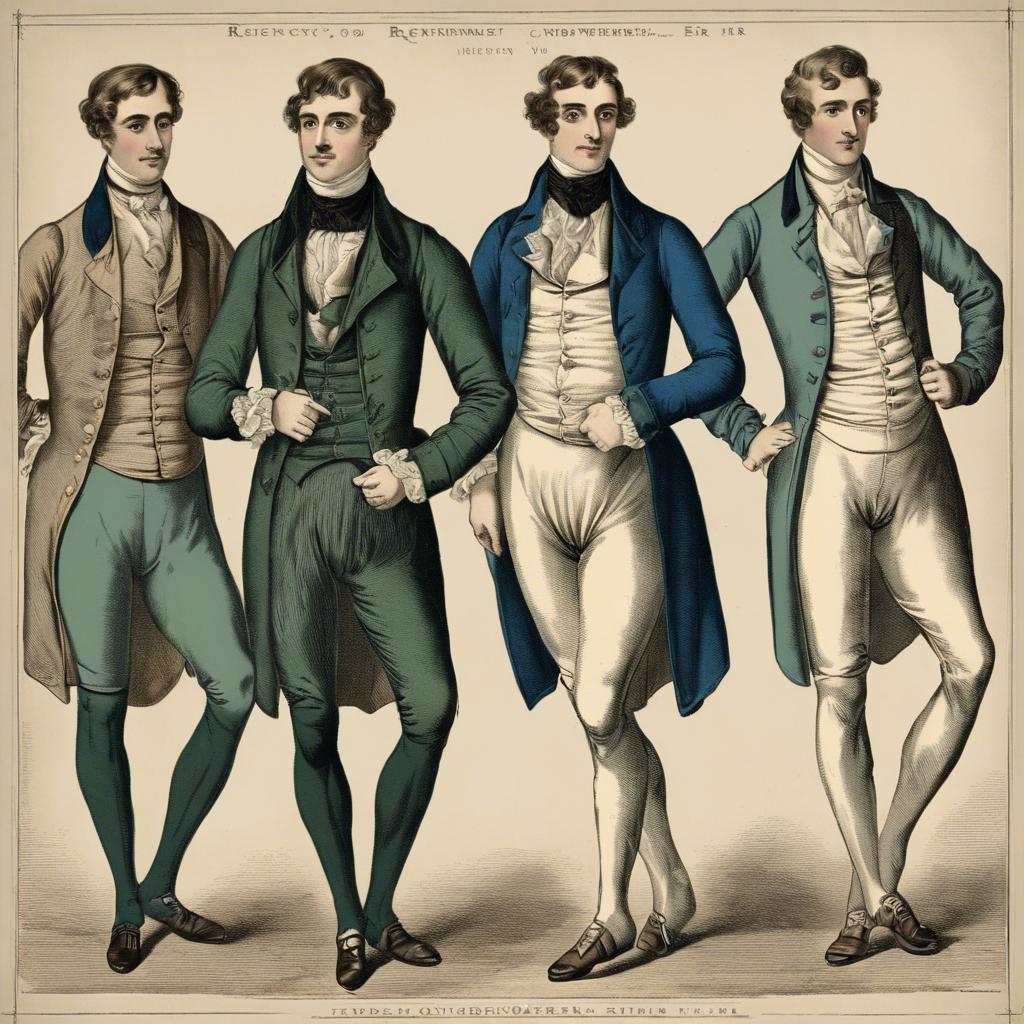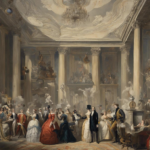During the Regency era in early 19th century England, fashion and decorum were of utmost importance in high society. However, beneath the well-tailored coats and impeccable waistcoats of gentlemen of the time lay a hidden world of intricate undergarments. From linen shirts to silk stockings, this article will delve into the undergarments worn by men during the Regency era and their significance in shaping the sartorial elegance of the period.
Regency Era Mens Undergarments: A Historical Overview
During the Regency Era, men’s undergarments played a crucial role in shaping the fashionable silhouettes of the time. Underneath their tailored coats and waistcoats, Regency gentlemen wore a variety of undergarments designed for both comfort and support.
Shifts: A man’s first layer of undergarment during this era was typically a linen shift, similar to a modern-day undershirt. This garment helped to absorb sweat and protect the outer clothing from stains. Shifts were usually knee-length and had short sleeves.
Breeches and stockings: Regency men commonly wore knee-length breeches made of fabrics like wool or silk. These breeches were fastened at the waist with ties or buttons and often featured decorative details like embroidery. To complete the look, men wore silk stockings that were held up with garters.
The Importance of Proper Undergarments for Men in the Regency Era
In the Regency Era, proper undergarments were essential for men to maintain a polished and refined appearance. Undergarments not only provided support and comfort but also played a crucial role in shaping the silhouette and style of men’s attire during this period. Here are some key points highlighting :
1. Support and Structure:
- Undergarments such as shirts, waistcoats, and drawers were designed to provide support and structure to the male figure, creating a smooth and streamlined look under outer garments.
- Corsets and stays were also commonly worn by fashionable men to enhance their posture and define their waistline.
2. Hygiene and Comfort:
- Clean and well-fitted undergarments were crucial for maintaining hygiene and comfort, especially in a time when bathing practices were not as frequent as today.
- Undergarments made of natural fabrics such as linen and cotton helped absorb sweat and keep the skin dry, preventing odor and discomfort.
3. Fashion and Style:
- Properly fitted undergarments were key to achieving the fashionable silhouettes of the Regency Era, including high-waisted trousers, tailcoats, and cravats.
- Undergarments also allowed for the layering of different fabrics and textures, adding depth and richness to men’s ensembles.
Fabric, Design, and Construction: Key Considerations for Regency Era Undergarments for Men
When it comes to crafting authentic Regency era undergarments for men, one must pay close attention to the fabrics, design, and construction methods used during that time period. For fabric choices, lightweight and breathable materials such as linen and cotton were commonly used to ensure comfort and ease of movement. These fabrics were often embellished with delicate embroidery or lace trimmings to add a touch of elegance to the undergarments.
In terms of design, Regency era undergarments for men were typically constructed with a focus on simplicity and functionality. Drawers, for example, were loose-fitting to allow for easy movement and were usually fastened with ties or buttons at the waist. Similarly, undershirts were designed to be form-fitting and discreet, with minimal embellishments or decorative elements.
When it comes to construction, attention to detail was key in creating well-made Regency era undergarments for men. Seams were carefully sewn with small, even stitches to ensure durability, while hems and edges were finished neatly to prevent fraying. Additionally, garments were often designed with adjustable features such as drawstrings or elastic bands to ensure a comfortable and secure fit for the wearer.
Expert Tips for Choosing and Wearing Regency Era Undergarments
In order to authentically embody the style of the Regency era, it is essential to pay attention to the undergarments worn by men during this period. Here are some :
1. Choose the Right Fabrics: When selecting undergarments for the Regency era, prioritize fabrics such as linen and cotton for their breathability and comfort. Avoid synthetic materials, as they were not commonly used during this time period.
2. Pay Attention to Fit: Proper fit is crucial when it comes to Regency era undergarments. Undergarments should be snug but not constricting, providing support without being overly tight. Opt for undergarments that are tailored to your body shape for a comfortable and authentic look.
3. Layer Wisely: In the Regency era, men typically wore a combination of undergarments, including shirts, waistcoats, and breeches. Layer these pieces strategically to achieve the desired silhouette. For example, a well-fitted shirt can help create a smooth base for outer garments, while a waistcoat adds structure and warmth to the ensemble. Experiment with different layering techniques to find the perfect combination for your Regency era look.
| Undergarment | Recommended Fabric |
|---|---|
| Shirt | Linen |
| Waistcoat | Cotton |
| Breeches | Linen |
To Conclude
the undergarments worn by men during the Regency era were not only practical in function but also reflected the social and cultural norms of the time. From the intricately constructed cravats to the supportive and versatile stockings, these undergarments played a crucial role in shaping the fashion and silhouette of the era. By understanding the significance of these undergarments, we gain a deeper insight into the sartorial practices of Regency gentlemen and the complexities of their social hierarchy. As we continue to explore the fashion history of this fascinating period, let us remember the understated yet essential role of undergarments in shaping the style and identity of Regency men.


